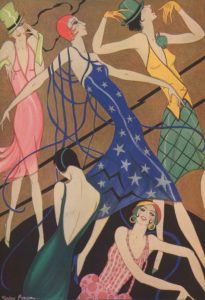Our Sites
-
Recent Posts
Recent Comments
Archives
Categories
Meta
IGCSE-Knowledge-Organisers—A-Divided-Union—Civil-Rights-in-the-USA-1945-74 IGCSE-Knowledge-Organisers—USA-1918-1941
 If you click here you will get to a nice article form History.com exploring change in the 1920s. It starts with a super 2 minute video.
If you click here you will get to a nice article form History.com exploring change in the 1920s. It starts with a super 2 minute video.
If you click here you will get a nice introduction to the importance of the automobile.
If you click here you will get the same for advertising.
If you click here you will get the same for city life.
Mr Kydd.
 If you click here you will get to a lovely article from about the ultimate symbol of the 1920s – the flapper in the 1843 magazine.
If you click here you will get to a lovely article from about the ultimate symbol of the 1920s – the flapper in the 1843 magazine.
As St Clair states “Once the war was over, many women returned to their old lives, but the spirit of emancipation persisted…Meanwhile, the crumbling of the old social order and the growth in the retail sector meant that women that might once have gone into domestic service became shop girls, living in cities with a disposable income to spend on traveling, make-up, clothes, fashion magazines and cinema tickets.”
Mr Kydd
 Following on from last week’s lesson on immigration policy in the 1920s, if you click here you will get to an article in The Guardian by Sarah Gilbert. In it, she tells the story of Augustus Francis Sherman.
Following on from last week’s lesson on immigration policy in the 1920s, if you click here you will get to an article in The Guardian by Sarah Gilbert. In it, she tells the story of Augustus Francis Sherman.
Many of the 12 million people who entered the US through New York’s Ellis Island wore traditional dress from their homelands. The early 1900s images by chief registry clerk Sherman have been brought to life in a book called The Paper Time Machine, by Wolfgang Wilding and Jordan Lloyd.
Above – a Ruthenian woman circa 1906 from the region historically inhabiting the kingdom of the Rus, incorporating parts of modern-day Slavic speaking countries.
Mr Kydd.
Guys,
I do feel it has been an excellent start to the course. Well done. If you fancy a nice extra then have a look at the following.
Mr Kydd.
This famous image is often presented as a (counter-productive) poster from the Women’s Christian Temperance Movement to get prohibition introduced. In fact all is not as it seems. What do you think is going on here ?
This site really has two roles.
1. It is meant to support you when you are working outside the classroom. Each unit page will have links to helpful websites and videos, as well as podcasts and example questions. This might be to help you secure difficult topics, or it might be to extend your understanding with ideas and evidence beyond the work in the lesson. Obviously it will be most useful when you do your revision.
2. It is also hoped that this site will enrich you beyond the normal topics. To help you develop a love of learning about the past, and to get you to think for yourselves.
We would expect different students to use the site in different ways, but please do take ownership of it. Finally, let me know if you find out anything you want to add.
Mr Kydd.